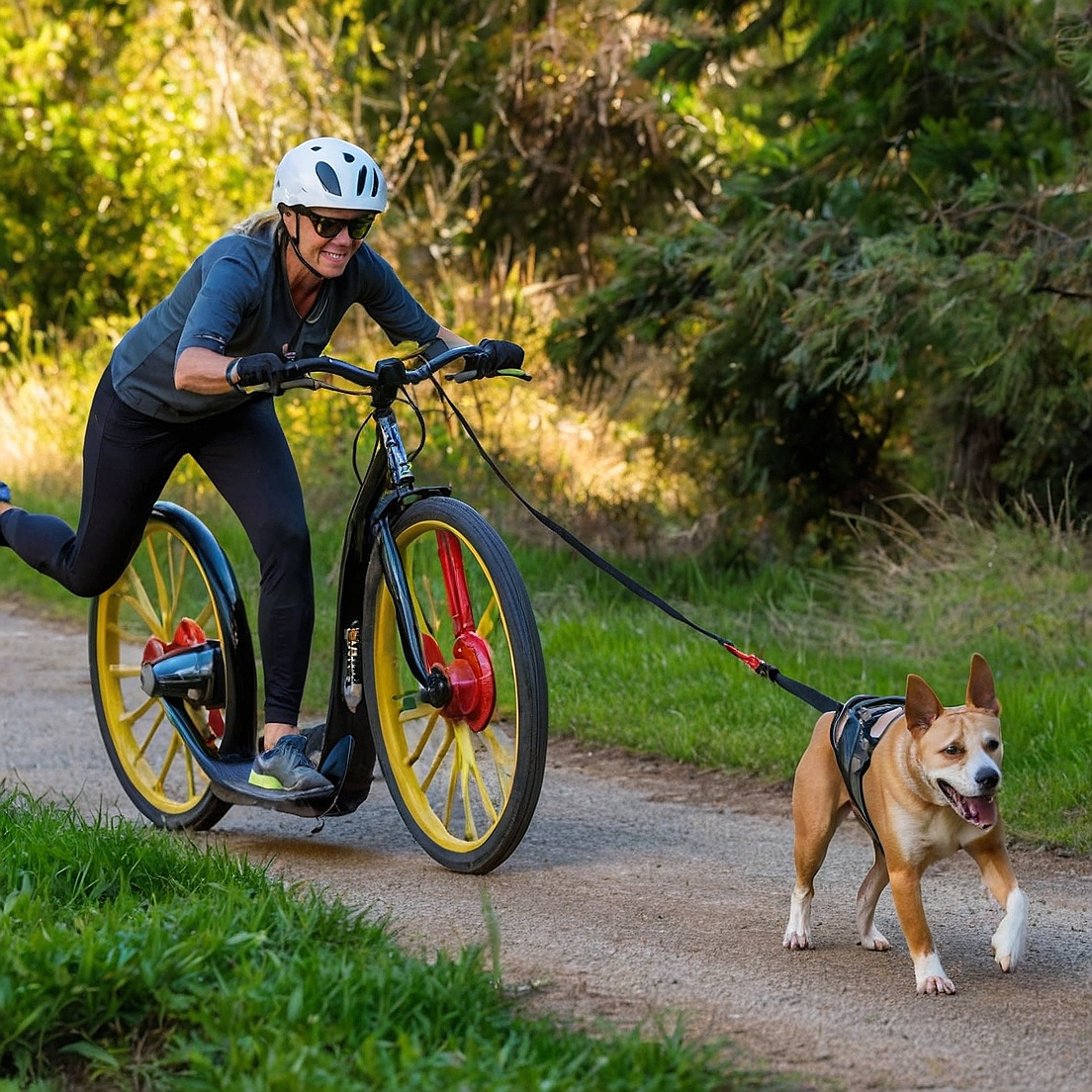Dog scootering, also known as dog scooter racing, is a fun and exciting activity that allows dogs to pull their owners on a scooter, promoting exercise and bonding between the dog and owner. However, before engaging in this activity, it’s essential to train your dog properly to ensure a safe and enjoyable experience for both you and your dog. Training a dog for dog scootering requires patience, consistency, and positive reinforcement. In this article, we’ll explore the steps to train a dog for dog scootering and provide valuable tips and advice to get you started.
Introduction to Dog Scootering
Dog scootering is a fantastic way to provide your dog with physical and mental stimulation, while also strengthening the bond between you and your dog. The activity involves a dog pulling its owner on a scooter, which can be an excellent way to burn energy and have fun. However, it’s crucial to introduce your dog to the scooter and the activity gradually, to avoid overwhelming or stressing them. Start by letting your dog become familiar with the scooter, allowing them to sniff and explore it at their own pace.
Preparation and Equipment
Before starting the training process, it’s essential to have the right equipment and preparation. You’ll need a dog scooter, a harness, and a leash. The harness should be designed for dog scootering, providing support and comfort for your dog. The leash should be sturdy and comfortable for both you and your dog. Additionally, consider investing in protective gear, such as a helmet and knee pads, to ensure your safety while scootering. It’s also important to choose a quiet and safe area for training, free from distractions and obstacles.
Training Steps
Training a dog for dog scootering involves several steps, which should be followed in a gradual and progressive manner. Here are some key steps to follow:
- Introduce the scooter: Let your dog become familiar with the scooter, allowing them to sniff and explore it at their own pace.
- Get your dog used to the harness: Put the harness on your dog and let them get used to wearing it, starting with short periods and gradually increasing the time.
- Practice walking with the harness: Walk your dog while wearing the harness, getting them used to the feeling of pulling and being pulled.
- Introduce the leash: Attach the leash to the harness and practice walking, getting your dog used to the feeling of being pulled and the sound of the scooter.
- Start scootering: Once your dog is comfortable with the harness and leash, it’s time to start scootering. Begin with short distances and gradually increase the length and speed of your scootering sessions.
Training Tips and Advice
Training a dog for dog scootering requires patience, consistency, and positive reinforcement. Here are some valuable tips and advice to keep in mind:
Be patient and calm: Dogs can sense your energy and emotions, so it’s essential to remain patient and calm during training sessions. Avoid punishing or scolding your dog, as this can create negative associations and hinder the training process.
Use positive reinforcement: Reward your dog with treats, praise, and affection when they perform desired behaviors, such as pulling or stopping. This positive reinforcement will help motivate and encourage your dog to learn and participate.
Keep training sessions short: Dogs have short attention spans, so keep training sessions short and fun. This will help prevent boredom and keep your dog engaged and motivated.
Stay safe: Always wear protective gear, such as a helmet and knee pads, to ensure your safety while scootering. Additionally, be aware of your surroundings and potential hazards, such as obstacles or other animals.
Common Challenges and Solutions
Training a dog for dog scootering can present several challenges, including pulling, stopping, and navigating obstacles. Here are some common challenges and solutions:
Pulling: If your dog is pulling too hard, try using a harness with a built-in brake or a leash with a shock-absorbing system. You can also try practicing “stop” and “wait” commands to help your dog learn to control their pulling.
Stopping: If your dog is having trouble stopping, try using a verbal cue, such as “whoa” or “stop,” and rewarding them with treats and praise when they respond. You can also try practicing stopping and starting, to help your dog learn to control their speed and momentum.
Navigating obstacles: If your dog is having trouble navigating obstacles, try practicing in a controlled environment, such as a park or empty parking lot. You can also try using verbal cues, such as “left” or “right,” to help your dog learn to navigate around obstacles.
Conclusion
Training a dog for dog scootering requires patience, consistency, and positive reinforcement. By following the steps and tips outlined in this article, you can help your dog become a confident and skilled scooter dog. Remember to always prioritize your dog’s safety and well-being, and to have fun and enjoy the experience of dog scootering together. With time and practice, you and your dog can develop a strong bond and enjoy the many benefits of dog scootering, including exercise, socialization, and mental stimulation.
